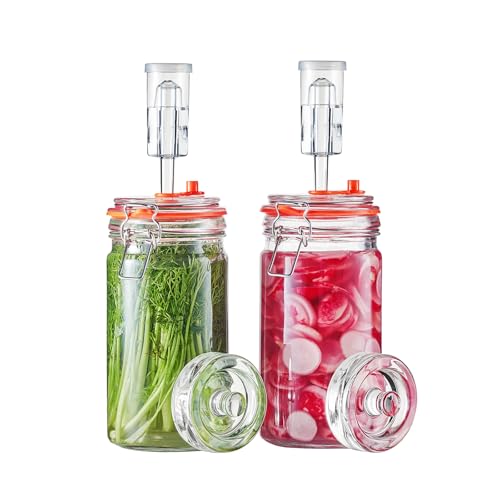I got my usual batch of Norton must this year with the typical ph level of 3.45. I did add oak powder this year to it and to my Chambourcin during fermentation for the first time. After a couple of rackings I checked the ph levels on both. The Chambourcin was about 3.5 but the Norton was about 3.72. Anyone have any ideas why the dramatic increase in the Norton? No cold crashing for either. Carboys were in my heated basement, temp was a fairly constant 70 or so after fermentation.
Rising PH level from start to finish in a Norton
- Thread starter Norton
- Start date

Help Support Winemaking Talk - Winemaking Forum:
This site may earn a commission from merchant affiliate
links, including eBay, Amazon, and others.
What yeast did you use? Did it undergo MLF yet?
Norton has a rather atypical acid profile. It has 3 times the malic acid and twice the potassium as most other grapes. Thus, it can have a high TA while still having a high pH (due to potassium buffering). The pH can rise rather dramatically if you remove some of the acid during the fermentation.
Here's some more information about the grape and making wine from it: http://www.uark.edu/depts/ifse/grapeprog/articles/ahis05wg.pdf
Norton has a rather atypical acid profile. It has 3 times the malic acid and twice the potassium as most other grapes. Thus, it can have a high TA while still having a high pH (due to potassium buffering). The pH can rise rather dramatically if you remove some of the acid during the fermentation.
Here's some more information about the grape and making wine from it: http://www.uark.edu/depts/ifse/grapeprog/articles/ahis05wg.pdf
Last night I added Tartaric acid in the amount reccomended in the instructions to lower ph by %.18. This afternoon I tested again and the ph has barely budged and the wine, which had tasted somewhat flabby before, now is very tart. I fear I have screwed up about 10 gallons worth of Norton.
Your pH may not change much due to the high amount of potassium. I would definitely cold stabilize it. That will drop some of the potassium and the tartaric acid. It should bring the flavor profile more in balance.
I would not mess with it too much more than that. I would sulfite at the level you need at the pH you end up with and call it good.
I would not mess with it too much more than that. I would sulfite at the level you need at the pH you end up with and call it good.
I didn't get the TA when I got the most and I don't have the ability to measure it now. Up until this point I typically just rely upon the pH levels. Although maybe for Norton that isn't enough.
We have some cold nights coming up next week so I definitely will at least try a cold crash.
We have some cold nights coming up next week so I definitely will at least try a cold crash.

$129.00 ($129.00 / Count)
Cru International - Washington Merlot Style Wine Ingredient Kit
Home Brew Ohio

$14.80
$24.00
The Geography of Wine: How Landscapes, Cultures, Terroir, and the Weather Make a Good Drop
Amazon.com

$155.96 ($155.96 / Count)
Winexpert Revelation Napa Cabernet Sauvignon 3 Gallon (Limited) Wine Ingredient Kit
Discount Hydroponics LLc

$7.90 ($0.20 / Count)
40+ Grape Seeds (Mixed): Grow Your Own Vines (Heirloom, Non-GMO)
SEEDSOFSTRENGTH

$30.99 ($15.50 / Count)
$41.80 ($20.90 / Count)
2 Pack 1 Gallon Large Fermentation Jars with 3 Airlocks and 2 SCREW Lids(100% Airtight Heavy Duty Lid w Silicone) - Wide Mouth Glass Jars w Scale Mark - Pickle Jars for Sauerkraut, Sourdough Starter
Qianfenie Direct

$28.69
$40.00
The Sommelier's Atlas of Taste: A Field Guide to the Great Wines of Europe
Faship store

$175.50 ($175.50 / Count)
Wine Ingredient Kit - CRU SELECT Chilean Style Malbec
Bridgeview Beer and Wine Supply

$213.50 ($213.50 / Count)
Wine Ingredient Kit - En Primeur Winery Series - South African Sauvignon Blanc
Bridgeview Beer and Wine Supply

$29.99 ($15.00 / Count)
JILLMO Fermentation Jar, 1 Liter Fermentation Jar with Fermenting Weights and Airlocks, Pack of 2
Raiser Co., Ltd

$26.14
$36.99
Jajadeal Plant Tying Machine Tool for Grapes, Raspberries, Tomatoes and Vining Vegetables, with 20 Rolls Tapes, 10000pcs Staples and Replacement Blades (Green)
Jajadeal Official Store US
No, the PVC pipe had nothing to do with it.
One thought - if the initial pH of the Norton was checked immediately after crushing it may not reflect the actual pH after soaking with the skins. As I mentioned, Norton has a higher potassium content than other grapes which is often tied up in the skins. As it soaks or ferments with the skins, more of that potassium could come out and buffer the acid.
I've never had my hands on Norton grapes myself. But I have talked with several Missouri wineries who tell me how tricky this grape is to manage the acids.
Again, I would not worry too much about it. All that matters is if it tastes good in the end and the pH is not too high (getting near 4?) to be able to adequately protect it with sulfite.
One thought - if the initial pH of the Norton was checked immediately after crushing it may not reflect the actual pH after soaking with the skins. As I mentioned, Norton has a higher potassium content than other grapes which is often tied up in the skins. As it soaks or ferments with the skins, more of that potassium could come out and buffer the acid.
I've never had my hands on Norton grapes myself. But I have talked with several Missouri wineries who tell me how tricky this grape is to manage the acids.
Again, I would not worry too much about it. All that matters is if it tastes good in the end and the pH is not too high (getting near 4?) to be able to adequately protect it with sulfite.
6 days on the skins. This is my 4th year doing Norton and this is the first time I had a problem. My favorite winery Norton is about 3.5 ph. Next time I won't worry about a 3.6 or 3.7 reading for something as tricky as a Norton. I also should have taste tested as I added the Tartaric acid. Live and learn.
Similar threads
- Replies
- 4
- Views
- 1K
- Replies
- 7
- Views
- 935
- Replies
- 10
- Views
- 966



























![[Upgraded] 9Pcs Tree Root Growing Box with Drain Holes, Half Transparent Plant Rooting Propagation Ball & Metal Core Twist Ties, for Fast Propagation Plants (Size M)](https://m.media-amazon.com/images/I/514MWQxtWOL._SL500_.jpg)














